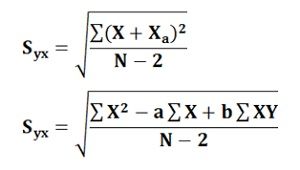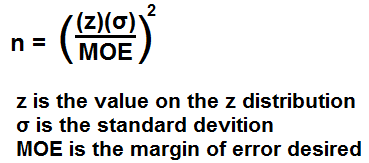
Let's get back to our scales example from paragraph one. You order laths with a length of 10 feet (304.8 cm), but upon receival you get laths that are 10 ft 1 inch (307.34 cm) long. Say you are purchasing wooden laths to make a treehouse. Let's take an example from everyday life. Example #1: Percentage error from observed and true value All of them can be checked using our calculator.
#CALCULATE STANDARD ERROR FORMULA HOW TO#
How to calculate percent error?īelow are several examples using different starting information and measurement units. Percentage error = E absolute / V true x 100Į relative = (V observerd - V true) / V trueĪs you can see there are many wasy to calculate it, but the math is simple enough to be done by hand in many cases. Then you can write the percent error formula like so: If you have calculated the absolute error using the formula below: If you do not care about the directionality of the error, then just take the absolute: |V observerd - V true| in the numerator. In some places the formula is written with (V true - V observerd), which is incorrect, or at least inconvenient, as this reverses the sign. The calculator will output negative errors with the minus sign in front of the percentage.



Note that for chemistry and most sciences it is customary to preserve the sign of the error as its direction matters. When calculated as we show above, the percentage error will be positive when the observed value is larger than the true, and it will be negative otherwise, so the sign of the error will be useful in understanding the direction of the error. Percentage error = (V observerd - V true) / V true x 100 The most straightforward is, assuming V stands for Value: There are several ways to write the percent error formula. The relative error calculator will then produce the error in percentages, positive or negative, depending on the direction of the observed discrepancy from the true value. If it is not known, enter your best available estimate. To use our calculator, simply enter the observed value from any given measurement or observation, and then provide the true value, if known. Percent error is not to be mistaken with standard error (of the mean), standard deviation (of the sample) or margin of error, as these are more advanced statistical concepts. So, the same absolute error results in vastly different percent errors, demonstrating its usefulness. However, 500 grams is a standard error in many home scales made for measuring your body weight, since 0.5kg is just 1% for a 50kg man (110lbs), and only 0.5% error from a 100kg (220lbs) man - good enough for the purpose. If you were measuring weights in a market, say, you might be selling potatoes, a 500 gram (0.5 kg or about 1 pound) error would be quite significant as the percent error from a 2kg (~4 pounds) bag of potatoes would be 25% and you will not be allowed to sell scales with such a high possible error. Our percentage error calculator is useful in quickly computing it.įor example, if I tell you that the absolute measurement error is 500 grams, you are not sure if that is a big or small difference, relative to what you are measuring. 1/100 is not as convenient as saying 1% error. Unlike the absolute error, which is expressed in whatever units are used to measure it, the percent error is in percentages making it much easier to communicate and understand how big of a concern the error is, without knowing anything else.

Percent error, also percentage error, is a measure of the accuracy of a measurement relative to a true or estimated value, sometimes referred to as "theoretical" value.


 0 kommentar(er)
0 kommentar(er)
